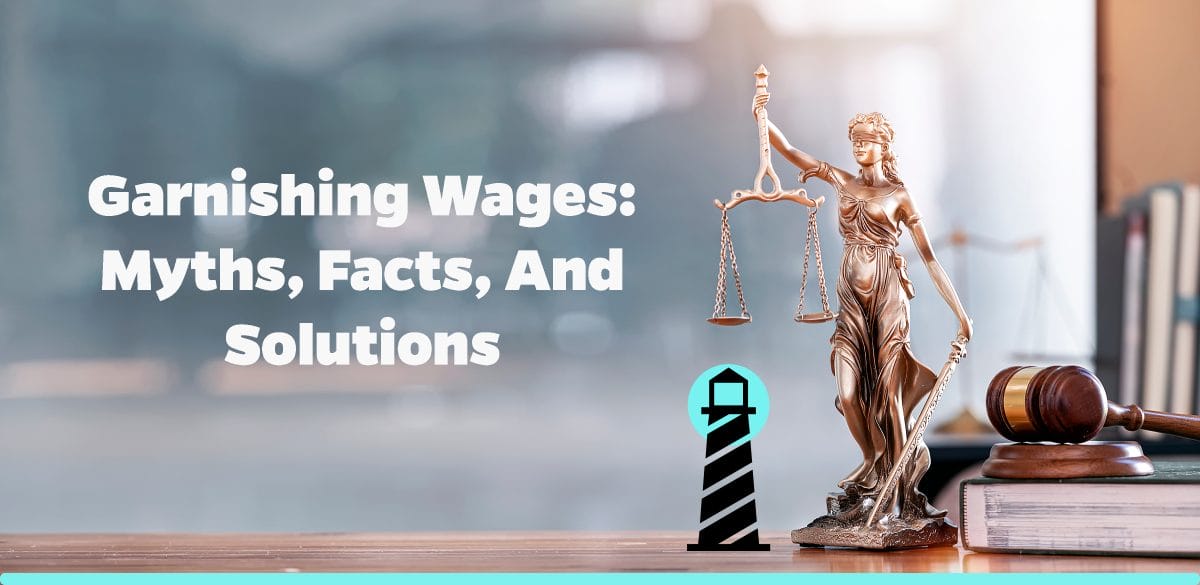Understanding Garnishing Wages
Garnishing wages, an often misunderstood term, involves a court order that mandates your employer to withhold a portion of your earnings directly from your paycheck to pay off creditors. When you owe money to a person or entity and cannot make payments according to your initial agreement, you could face wage garnishment. The money is transferred to the entity to which you owe the debt, reducing your take-home pay.
As a nationwide tax relief company, Brightside Tax Relief is committed to providing you, the reader, with detailed, educational content to clarify the often misunderstood subject of wage garnishments. Many prevailing myths often trigger unnecessary worry or misinformation. This article aims to dispel these misconceptions, highlight the facts, and present solutions that can help you deal better with wage garnishments.
Dismantling Myths Surrounding Wage Garnishments
Several wage garnishment myths circulate, causing confusion, and masking the real issue at hand. Let’s dispel these myths:
– Myth 1: only the government can garnish your wages
In reality, any individual or entity to whom you owe money can file a court order for wage garnishment, including credit card companies and banks.
– Myth 2: wage garnishments can take away all your income
There are federal restrictions on the percentage of income that can be garnished to safeguard basic livelihood. Only a certain portion of your disposable earnings (after tax income) can be garnished under federal laws.
– Myth 3: wage garnishment comes without warning
In most cases, creditors have to win a court judgment against you before they can garnish your wages, which allows ample time to arrange repayments or seek legal help.
Identifying and Understanding Wage Garnishment Facts
Now that we have debunked common wage garnishment myths, let’s understand the facts:
– Fact 1: there are limits to wage garnishments
Under federal law, your employer can only garnish a maximum of 25% of your disposable income or the amount by which your wages exceed 30 times the federal minimum wage, whichever is lower.
– Fact 2: wage garnishment applies until the debt is paid
The garnishment will remain in effect until the entire debt is cleared or arrangements are made to pay off the debts.
– Fact 3: Employers cannot terminate your employment due to garnishment
Under federal law, you cannot be terminated because your wages were garnished for any single debt. However, this protection does not exist if your wages are garnished for two or more debts.
Solutions to Wage Garnishments
An ounce of prevention is indeed worth a pound of cure, and managing debt responsibly can help you avoid wage garnishments. However, if you find yourself facing it, consider the following steps:
– Communicate with your creditor: Encourage dialogue and potentially negotiate a payment agreement, restructuring your debts to become more manageable.
– Challenge the garnishment: Hire representation and contest the garnishment order in court if it poses significant financial hardship or if you believe the amount garnished is incorrect.
– Bankruptcy: In some cases, declaring bankruptcy will stop wage garnishment, but this should be seen as a last resort due to its long-term credit implications.
A Partner in Navigating Wage Garnishments
Dealing with wage garnishments can be stressful, and misunderstanding the process makes it even more challenging. Knowing the facts empowers you to assert your rights and make informed decisions.
At Brightside Tax Relief, we provide a lifeline for those facing wage garnishments. We can guide you through negotiating a payment plan, counseling on financial management, or representing you in court to dispute a garnishment order.
By debunking myths and laying bare the facts about garnishing wages, we hope you have gained useful knowledge enabling better decisions on wage garnishments. Remember, if you face any hesitation or need more guidance, Brightside Tax Relief is always ready to assist.




